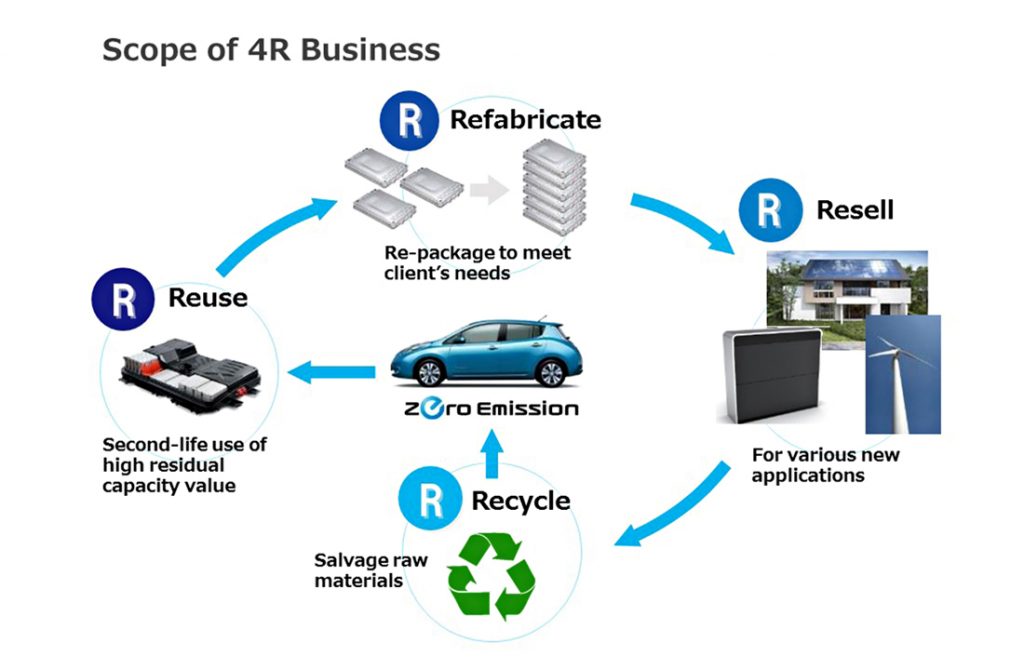To deliver on the promise of zero-emission transport, it is not only necessary to curb tailpipe emissions, but also to build out the generation and storage of renewable energy. If the electricity needed to charge your EV does not come from renewable sources, the full potential of EVs to decarbonise transport cannot be realised. EVs can play an important role in balancing the grid, while second-life batteries play a critical role in energy storage. This interdependence of the automotive and the energy sectors is creating an abundance of exciting innovation, from smart charging software to mobile storage solutions that form part of a circular value chain for used batteries, turning the battery from a liability into an asset.
Connecting EVs with the energy system
Renewable energy generation is by its very nature intermittent—the sun does not always shine and the wind does not blow. Energy therefore needs to be stored behind the meter in order to capture excess supply and release energy during peak demand. EVs are effectively batteries on wheels. For example, the battery of a Jaguar I Pace (90kWh) can power an average UK household for more than a week. Smart charging connects a vehicle to the grid, storing energy at the edge of the grid when it is not needed and releasing it when required. EV owners can configure the software so that their mobility requirements are factored in—such as making sure the vehicle is 80% charged every morning by 7:30 am—as they help to balance the grid. We also anticipate that the EV as a storage device will become an increasingly attractive choice for households who generate their own energy.
To deliver on the promise of zero-emission transport, it is not only necessary to curb tailpipe emissions, but also to build out the generation and storage of renewable energy.
However, to really make an impact, it’s important to think big. In Adelaide, South Australia, three thousand solar powered homes and batteries have been linked up to create a virtual power plant, easing the stress on the electricity grid caused by peaks and dips in solar power. The energy is stored in batteries and released during peak periods of demand. By aggregating power in this way and establishing central control over residential systems, the economics start to become viable. Power that is not needed can be traded back into the grid, using cloud-based software.
A second life for batteries
As EV sales ramp up, the focus is shifting on finding ways to extend the useful life of batteries as much as possible before they are recycled. Once EV batteries degrade below 70% of their original performance, they are no longer deemed fit for automotive use. However, there is a growing number of second-life use cases that enable OEMs to realise additional value from batteries that have reached the end of their first life, turning them from a liability into an asset.
As second-life use cases proliferate, if should positively impact the sticker price of EVs. Companies like Off Grid in the UK produce mobile storage solutions for construction sites and events, replacing conventional diesel generators with a more sustainable alternative. The company sources battery cells from OEMs and repurposes them for its energy storage solutions.

Recycling capacity is becoming more efficient
Battery recycling is a rapidly growing business, and recycling technologies are becoming ever more efficient. Companies like Battery Resourcers are leading the way, going beyond the mere extraction of valuable raw materials during the recycling process to produce cathode material that is as performant as virgin material but considerably cheaper. Cathode is the most expensive component in a battery, accounting for more than 40% of its costs. Using recycled material is both reducing the cost of the battery and its environmental impact, while meeting incoming regulations.
If the electricity needed to charge your EV does not come from renewable sources, the full potential of EVs to decarbonise transport cannot be realised
Closing the loop
The goal of every OEM is to achieve full circularity for its batteries, starting with the use of the battery in the car, to its second life as a means of energy storage, until it its recycled and the extracted materials are added back into new battery packs. The industry is seeing rapid innovation across this entire value chain that brings it every closer to achieving full circularity, thereby improving both the cost-effectiveness and the environmental performance of EV batteries.
The growth of renewable energy generation is an important catalyst for second-life applications, as are increasingly stringent environment regulations for building sites and events which boost demand for mobile storage solutions that replace diesel generators. For OEMs, this new circular battery value chain also means that more value can be extracted from batteries, which helps to make the production of EVs economically more viable. The creation of virtual power plants, connecting thousands of solar powered homes and batteries, create exciting possibilities to make EVs part of a more sustainable energy solution by creating vehicle-to-grid connections through smart, bi-directional charging technology. Thinking of EVs in this holistic way points to an exciting future.
About the author: Sebastian Peck is Managing Director at InMotion Ventures



